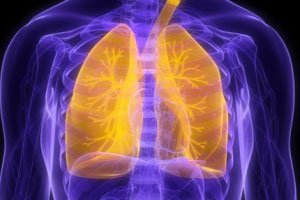MORE than 40% of people diagnosed with chronic obstructive pulmonary disease by their GPs may not actually have the condition, according to new research in the MJA.
The research involved 445 patients, with an average age of 65 years, who were taking respiratory medication and had been identified by their GPs as having chronic obstructive pulmonary disease (COPD). (1)
But when researchers used spirometry to confirm the diagnosis, only 57.8% of patients had post-bronchodilator spirometry consistent with COPD. Spirometry is essential for accurate diagnosis of COPD because, according to clinical guidelines, the diagnosis rests on demonstrating airflow obstruction that is not fully reversible.
Surprisingly, the researchers found that the presence of a spirometer in a general practice was not associated with increased diagnostic accuracy of COPD.
Lead researcher Professor Nick Zwar, professor of general practice at the University of NSW, told MJA InSight that there were several barriers to the use of spirometers to diagnose COPD in general practice.
Time and money were major barriers. GPs had to wait 10‒15 minutes between a patient’s pre-bronchodilator and post-bronchodilator spirometry blows, but the Medicare rebate for this test was only $16.85.
“The remuneration is pathetic … it’s not commensurate with the work”, Professor Zwar said.
Other barriers were the need for skills in coaching patients to use the spirometer effectively, and in accurately interpreting the results.
Professor Zwar called for practice nurses or other health professionals to be trained in spirometry. “I don’t think it’s something GPs should do themselves because the test ties up the doctor for so long.”
The researchers identified several implications of the high misdiagnosis rate. The study found that 57 of the 188 patients who did not have COPD on spirometry were being treated with the anticholinergic agent tiotropium, which is a restricted benefit item in Australia for the long-term management of COPD.
“This exposes patients to unnecessary risk of adverse effects of medications and has cost implications for the patients and the health system. It also means that the true cause of the patient’s respiratory symptoms may not be correctly identified and treated”, the researchers wrote.
The study found that people with more comorbidities were more likely to have COPD misdiagnosed by their GP.
Professor Zwar said the research showed that patients were presenting to their GP with respiratory symptoms that did not lend themselves to a clear diagnosis. “For people with comorbidities, there is a need for doctors to work to get a more specific, certain diagnosis rather than making a clinical diagnosis only”, he said.
The researchers suggested that patients with comorbidities should be prioritised for thorough investigation.
The study also found that practices with a practice manager had higher rates of COPD misdiagnosis; however, the researchers believed this was a chance finding.
COPD is a major cause of morbidity and mortality in Australia. For every 100 encounters with patients aged 65 years and over, 21 involved COPD.
– Sophie McNamara
Posted 15 August 2011

 more_vert
more_vert
This study raises many valid concerns about the well known limitations of relying on a ‘clinical’ diagnosis (often when the patient is very well known by the practice) uninformed by a very simple test but the embarrassingly low reimbursement relative to the overall cost to the practice is a huge disincentive for greater use in primary practice I suspect. An even greater issue is the reverse of this study’s main point: the massive percentage
of patients who genuinely have COPD for years ( in retrospect) but have never had spirometry despite extensive other workup usually cardiac often including cardiac catheterization as part of investigation of breathlessness. This elephant in the room is a woolly mammoth waiting to be noticed.
Should the headline not read ‘Cutting corners causes misdiagnosis’?
Whatever the perceived reasons of clinicians for abandoning the required standard are can then be elucidated in the text. Like this it sounds a bit as if due to lack of time and money us poor suffering docs can’t help but misdiagnose COPD.
There is a reasonable argument that all primary care patients should have their spirometric lung function measures recorded, along with their height, weight, and date of birth. Certainly all primary care practices should own and more frequently use an appropriate spirometer. There are accredited training courses for spirometry use, but the doctor should also be able to use (and interpret) them. There is no legitimate excuse for diagnosing or properly managing patients with COPD (or other common respiratory disorders) without spirometry. Whither scientific medicine?
Another problem is a CXR reported as “hyperinflation” which is a physiological, not radiological diagnosis.
And if there is additional comment that this suggests/indicates COAD, the GP may act on that report alone.